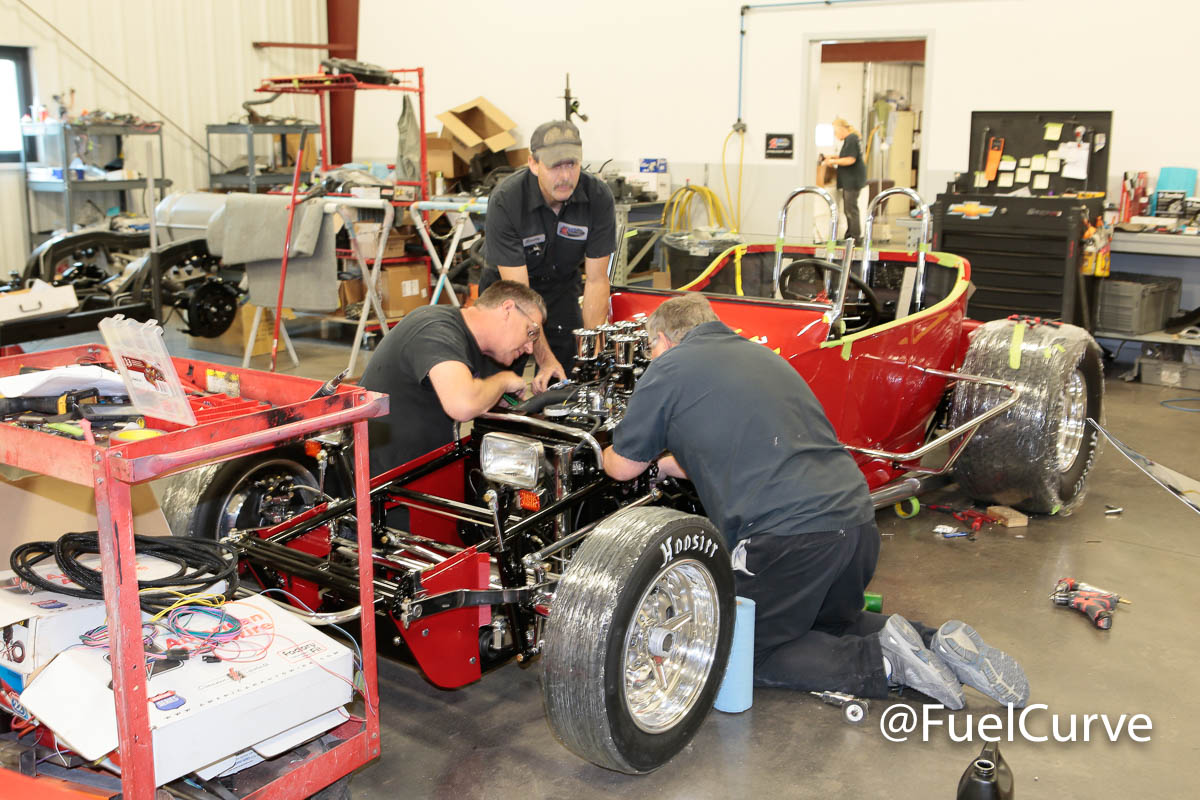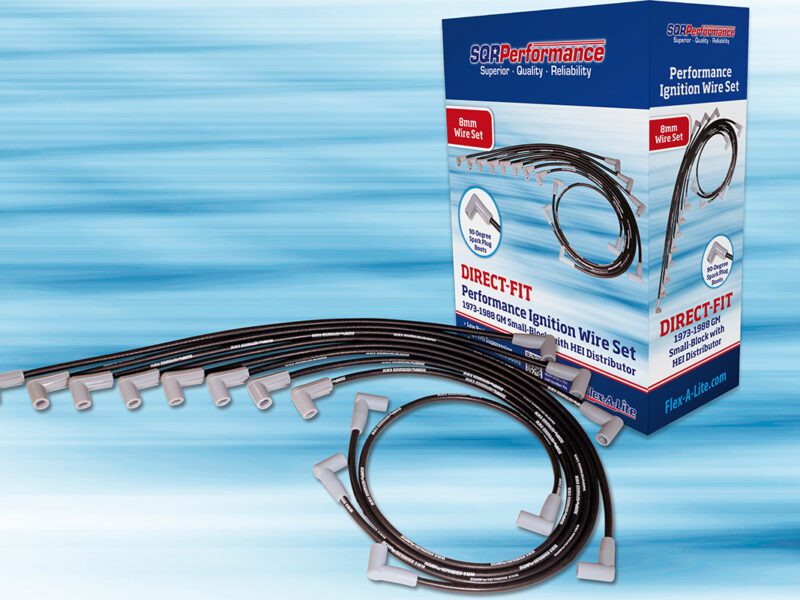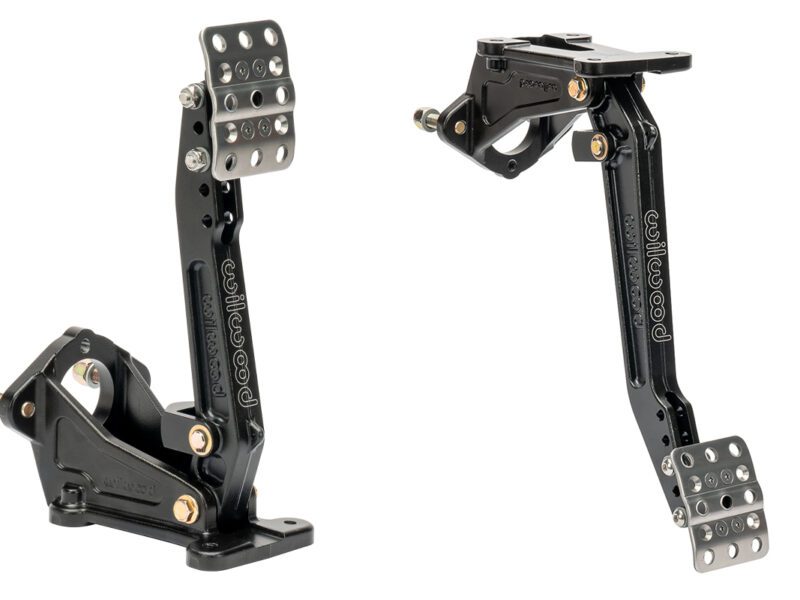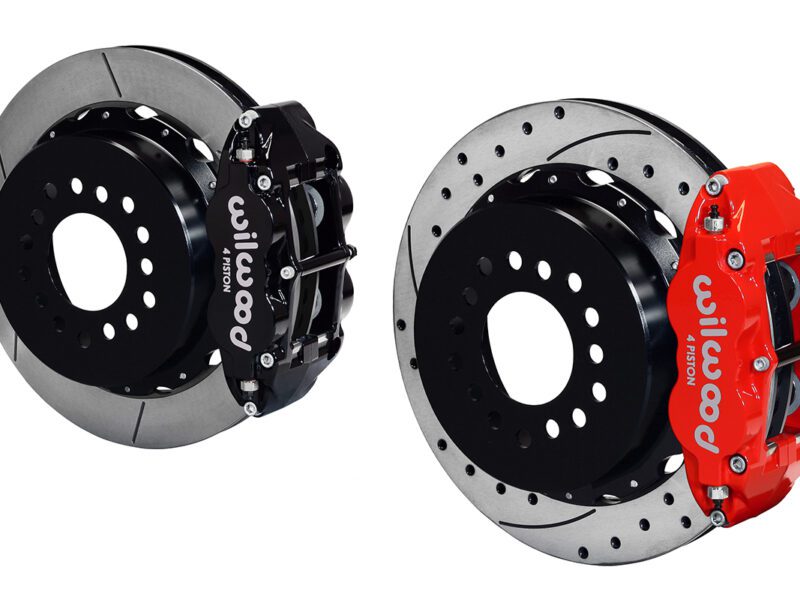Getting Your Ride Ready for Spring
We’re almost done with all the winter “honey-do” projects, the spring training Cactus leagues are in full swing, and there’s still some downtime before the hot rod season starts again. Even the guys in the warm states get a little quality time in the garage this time of year. Let’s look at some projects to improve the summer rides you have coming up. Make a list of all the little and large things that bugged you last summer. Your riding buddy, especially if female, can undoubtedly add a few goodies to that list.
Keep a few wrenches handy as we go around the car to check all the bolts for tightness. A rusty stain around the bolt head is a sign of movement, so keep your eyes peeled. Cotter pins and rod end jam nuts often get loose, so watch that as well. Look carefully at all fasteners for the presence of locking devices. Maybe you were short a couple lockwashers or Nylocs when you put the car together. You planned to remember to go back and get them but… Bolts must protrude through Nylocs at least 3 full threads for them to lock properly. You can get by with one Nyloc reuse in a pinch, but as cheap as they are, why chance it?
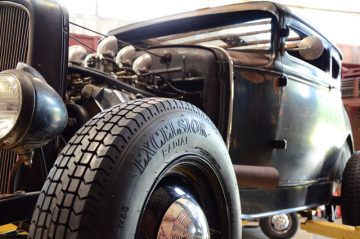 Look at the front tires. Are they wearing evenly? Maybe it’s time for a re-alignment. And you need to check all the ball joints, kingpins, and tie rod ends for wear. Do the shocks bottom out, causing a rough ride? You put on those trick disc brakes but maybe they wear out just like the ones on your truck. While we’re right there, check to see if the brake hoses are getting old. We are seeing much shorter life on all rubber parts with the changes in chemistry mandated by the EPA, so look closely for cracks in the brake hoses and tire sidewalls.
Look at the front tires. Are they wearing evenly? Maybe it’s time for a re-alignment. And you need to check all the ball joints, kingpins, and tie rod ends for wear. Do the shocks bottom out, causing a rough ride? You put on those trick disc brakes but maybe they wear out just like the ones on your truck. While we’re right there, check to see if the brake hoses are getting old. We are seeing much shorter life on all rubber parts with the changes in chemistry mandated by the EPA, so look closely for cracks in the brake hoses and tire sidewalls.
The master cylinder under the floor keeps the firewall neat but is hard to check. Out of sight out of mind, like the saying goes. A mirror can make checking the level easier and less messy than sticking your finger in it. Is there any leakage? Wherever the master cylinder is mounted, brake fluid does have a finite lifespan. It is hygroscopic, which means it attracts water. The water reacts with the brake fluid and forms acids that erode the cylinder bore and damage the rubber. That’s a good reason to buy small cans of brake fluid to ensure freshness.
Since hot rods often don’t get driven much for months on end, the fluid should be changed every three to four years. The easy way is to use four jars with hoses from each wheel cylinder running into them. Open the bleeders and SLOWLY pump the brake pedal, being sure to keep the reservoir from getting empty. By the time you have run a couple average 12-ounce size bottles of brake fluid through, the lines should be flushed with clean fluid coming out. I’ll bet you’ll be surprised at how bad the old fluid looks.
Going to the rear axle, take another look at the tires checking wear, pressure, and sidewall cracks. This might be a good time to fix that leaking seal at the driveshaft yoke. You may be able to save a worn yoke with a very thin repair sleeve that is available at a real parts store. (The one staffed by people who can do more than ring up wax and air fresheners). Check for axle seal leaks while you’re at it, and check the fluid level. Many experienced mechanics will leave it just a little low to help prevent leaks. Rear brakes will outlast a couple sets of fronts but now is an easy time pull a wheel to check, and maybe catch a weepy axle seal too.
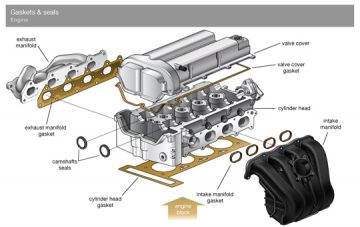 Speaking of leaks, check the engine and trans for them. Better quality gaskets are available if you ask for them in that good parts store, and will surprise you in how well they work. Maybe the engine has more blow-by than the gaskets can handle, or maybe that $3, 10-year-old PCV valve needs to be replaced. Any burned plug wires? Most of us run Electronic ignitions, so points won’t be an issue, but caps, rotors, and plugs do get worn and corroded. The rubber on the fan belts deteriorates like all the rubber. It also wears down further in the belt grooves until it slips.
Speaking of leaks, check the engine and trans for them. Better quality gaskets are available if you ask for them in that good parts store, and will surprise you in how well they work. Maybe the engine has more blow-by than the gaskets can handle, or maybe that $3, 10-year-old PCV valve needs to be replaced. Any burned plug wires? Most of us run Electronic ignitions, so points won’t be an issue, but caps, rotors, and plugs do get worn and corroded. The rubber on the fan belts deteriorates like all the rubber. It also wears down further in the belt grooves until it slips.
The advice on changing brake fluid goes again with the coolant. Antifreeze does go acidic with time and will corrode parts. Aluminum heads, manifolds, and radiators are too pricey to let them rot away. Why let old fluids sit in the engine all winter? Change it now and get rid of those acids as well. Maybe the trans fluid is getting skunky smelling too. Is the air filter element the same one that came with the cool chrome housing 6 years ago? Sometimes basic maintenance gets a little sketchy on cars we don’t drive every day.
A look under the dash may reveal a wiring job that got a little rushed. Look for wires with melted insulation and rubbing on sharp edges. A couple grommets may save a lot of time along the road! Are the fuses marked, or do you think you’ll remember what they do late on a rainy night? If a fuse blows regularly or a switch is getting hot, think about changing the circuit to include a relay to unload them. Are the headlights getting dull, or is it just those experienced eyes? Check for inadequate grounds, cheap overloaded switches (from the not-too-professional parts store). Sylvania (and maybe others) make new high-quality headlight bulbs that really do make a difference. Just in case the guy BEHIND you has experienced eyes too, maybe you should think about brighter tail lights or a third brake light. Better bulbs, aluminum foil inside the housing, LED lights, and cleaning the lenses inside and out will help more than you might think.
Does the starter drag when it’s hot? Fix it now or risk getting stuck. Better quality solenoids, rebuilt starter motors, or fatter cables with better grounds will usually get the job done. Gear drive starters and remote solenoid kits are out there to fix the tougher ones. Check the alternator bearings with the engine running, using a screwdriver with the blunt end against your ear and the blade on the alternator body to listen for unusual noises. Compare it to your everyday car if you’re not sure what usual noises sound like.
Wiper blades most definitely go bad, and nobody thinks about them until it’s raining! Kits to convert them to intermittent operation really are nice and easy to install. You may even want to upgrade from the import cheap noisy motor to one of the quality units now available for almost any car.
All this assumes that you have a wiper system installed that works at all. Rain-X is a great product, but night time rain, oncoming headlights, and tired eyes are a dangerous combination. Oh yeah, the horn works too, right?
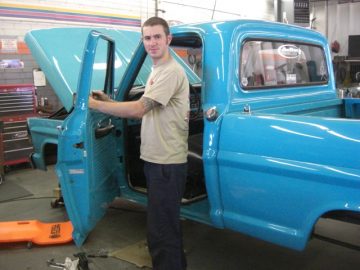 A little fine tuning of the door, decklid, and hood fit may be in order. We are all in a hurry to get on the road, and maybe need to spend a little more time on them now. Frames and bodies (especially ‘glass) move and settle, so some re-shimming may be in order too. A clay bar and a real wax job can make that paint shine like it did when it was new. Cars just get a little gunked up with use.
A little fine tuning of the door, decklid, and hood fit may be in order. We are all in a hurry to get on the road, and maybe need to spend a little more time on them now. Frames and bodies (especially ‘glass) move and settle, so some re-shimming may be in order too. A clay bar and a real wax job can make that paint shine like it did when it was new. Cars just get a little gunked up with use.
I know this seems like high school shop class to a lot of us, but some of us never had that wonderful basic training or got to work in the now-nearly-extinct local service station. I know I get busy myself, then it’s summer again, and I still forget to work on the punch list for the hot rods. Maybe a check-up day would be a good club activity, especially if one of your buddies has a lift in his shop. Preventative maintenance done at home is always easier than an emergency dealt with on the road. Ask the guys who never break down and drive everywhere. They’ll tell you the same, and probably more.
Now that this month’s column is handled, I guess I’d better get out there and take my own advice!

